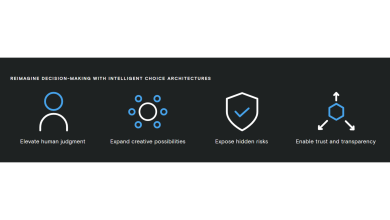
This year, we have seen agentic AI emerge as the new kid in town, catching everyone’s attention, and for good reason. The technology promises to offer an autonomy that most businesses desire and can further accelerate business transformation by automating workflows in real-time.
While companies continue to explore the full potential of the technology, it has already contributed in enhancing customer service and processing information. AI agents are also capable of complex decision-making, when they have access to wide-ranging data, from customer profiles to transaction histories.
Having said that for the technology to fully fulfil its purpose and make informed decisions that align with the overall business objectives, agents need to be able to use this data in real-time for contextual awareness and to allow them to adapt to changing environments and situations.
AI agents must understand the specific circumstances and nuances of each case they handle in order for the decision to be reliable and unbiased. To achieve this, there needs to be a strategic deployment of the technology across a business, with agents deeply integrating with the organisation’s data systems.
What agentic AI has to offer
What makes agentic AI so special is its capability of independent decision-making. Agents are able to reason, plan and immediately take action. In contrast to other automation tools that follow a fixed path, agents do not depend on pre-determined instructions. Instead, they use learnt patterns to decide on the next, best move that would help them achieve their goals.
With this, there is no doubt that agentic AI alleviates business pressures by streamlining processes, freeing up employees’ valuable time to focus on more creative and pressing projects. The technology enhances efficiency through automation while it continues to learn and adapt in order to improve the business’ workloads. For all this to be possible, agentic AI leverages vast amounts of existing data to perform the analytics required for effective action.
Agentic AI limitations
All this sounds great on paper, but here is the catch. For AI agents to be useful, they must not only process information intelligently but must do so in a way that aligns with the business goals and operational environment they are designed to support.
Agents, without a deep understanding or context, might generate insights that are smart or interesting but might ultimately not be actionable or even aligned with the business goals – which defeats the purpose of the agents. Not to mention that the results might turn out to be biased or unreliable.
Usually the retrieval of data can provide you with various details of the business and its operations but it will not be sufficient for the models to perform effectively. This is why context and more specifically context engineering is crucial for a successful and reliable agent.
Removing the barriers
Context engineering takes the ideas of prompt engineering and Retrieval-Augmented Generation (RAG) to the next level. At first, RAG focused on vectorising documents for semantic similarity searches, but it later evolved to include structured data from various databases. The term “context engineering” reflects a more comprehensive approach to providing AI models with the knowledge they require. It involves modeling and making accessible all organisational knowledge such as business systems, customer interactions, industry practices, as well as causal relationships between different metrics and outcomes.
Having contextual understanding means that agents are not only retrieving relevant data but also integrating and modeling this data to accurately reflect real-world business processes and needs. Agents are also able to make informed and actionable decisions within specific operational frameworks.
It is therefore critical to consider consolidating and modeling organisational data when developing agentic AI. This will better help agents to understand the business objectives, customer interactions and any other nuances. This step is crucial for building intelligent agents that can act on this integrated data to automate and optimise business processes.
Additionally, it is equally as important to use the right data and AI platform that can handle potentially thousands of concurrent queries while performing workload management at scale to ensure queries are prioritised and results are returned in accordance with Service Level Agreements (SLAs).
With that said, we’re only at the very beginning of the agentic AI adoption. Its huge potential of autonomous capabilities drove further adoption with organisations enthusiastically looking at ways to incorporate agents into their processes.
Despite the undeniable perks though, it is important to consider the limitations that come with this technology and how to best tackle them. If agents operate without an oversight of the full picture, they can prove to be more damaging than beneficial. Instead, they need to be able to reflect on current objectives and apply those insights to the business realities. Context engineering will give them exactly that, helping them gain the competitive advantage they need.



